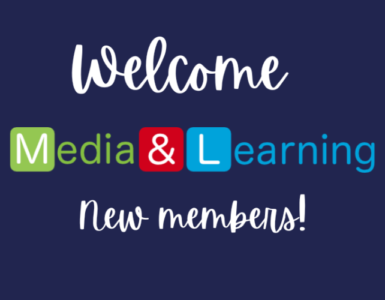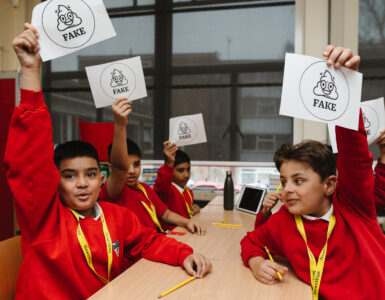by Janne Länsitie & Lotta Pakanen, Oulu University of Applied Sciences, Finland.
Artificial intelligence, like digitalisation, is now intertwined in almost every aspect of the educational world, and its significance seems to be growing rapidly. In response to this situation, Oulu University of Applied Sciences (Oamk) offers comprehensive continuing education for its staff and teachers about generative AI and its possibilities, particularly as a support tool.
From policy to practice
In Finland, ARENE (Rectors’ Council of Universities of Applied Sciences) published recommendations on the use of AI in universities of applied sciences in spring 23. The recommendation presents a so-called traffic light model, according to which a teacher can a) allow the use of AI freely (green light), b) allow the use of AI if the student indicates which AI and how he or she has used it (yellow light) or c) prohibit the use of AI for a justified reason (red light). ARENE’s recommendations have been adopted by all universities of applied sciences and have been used as the basis for more concrete guidelines for universities.
Oulu University of Applied Sciences published its own guidelines for the use of artificial intelligence in autumn 23. The guidelines serve as a starting point for even more concrete sector-specific policies. The basic idea behind the guidelines is to allow and encourage the use of AI, as it is an important work-life skill.
The adoption of generative AI requires teachers to understand its possibilities and challenges. This is not just a technical issue, but also requires a reassessment of the pedagogical perspective. In addition to informing and setting guidelines, it is crucial to organise training for teachers and other staff on the topic. The goal of this training is to update and expand teachers’ knowledge on how AI affects higher education teaching and learning practices, and how it transforms teaching across various fields, but it also requires a reassessment of the pedagogical perspective. AI applications offer the potential to streamline especially routine tasks. Multiple AI-related themes have been generally useful for most of the staff and teachers: Understanding large language models and prompt engineering, AI in media production, AI challenges of media literacy, AI promoting accessibility and, AI guiding personalised learning.
On top of that, each educational field has its unique challenges and opportunities related to the adoption of AI. For instance, the skills and practices in social and health care, business, or information technology vary – in addition to field-specific applications, there are numerous work-life-related issues in which AI plays a varying role. Teachers at the Language Center face different challenges than campus counselors, etc. The goal of staff and teacher training is to ensure that Oamk keeps pace with the rapid ongoing changes, regardless of the person’s role in the organisation.
Flexible training solutions
A variety of training methods are offered to staff, as it is unlikely that one model will reach the entire workforce. The offer includes expert lectures, workshops and peer learning opportunities. Training has been offered both online and face-to-face. There are multiple national and international open courses on AI basics. Oamk offers training specifically aimed at teachers focusing on tasks related to teaching with AI support. This diversity ensures that everyone can find a suitable way to learn and develop.

Oamk has utilised digital badges and micro-learning for years. Oamk has created several digital badges on AI and its use in education. These badges are intended to encourage staff to learn about AI and try out different applications. Priority is given to the use of AI applications already in use at Oamk. The digital badges deal with themes such as Ethical use of AI and AI tools in course material production.
One significant challenge is the timing of training. Reaching all teachers simultaneously is difficult, and the training must fit their needs and schedules. Teachers and other staff have varying levels of knowledge and skills using AI. Some are just beginning to notice the presence of AI, some are trying AI applications for the first time, and some are experts in the subject. It´s important that everyone has the possibility the get training at their own level.
The challenges brought by AI affect not only teachers but also all college students. Students must be offered equal opportunities to learn and utilise AI. How to ensure that all students have equal access to essential knowledge and skills for today’s and tomorrow’s working life? Teachers must find solutions to these questions together. Individual teachers should not on light grounds limit students’ equal opportunities to use AI.
Investing in AI training for staff and teachers requires resources. Reaching the entire workplace is an ambitious goal, but worth aiming for. Over the past year, it has been concretely observed that AI is not just a challenge of technology but also an opportunity to renew teaching and learning practices in all fields, ensuring that higher education provides students with valuable learning experiences and prepares them for the needs of the future working life.
Authors

Janne Länsitie, senior lecturer at Oulu University of Applied Sciences School of Professional Teacher Education, Finland

Lotta Pakanen, senior lecturer at Oulu University of Applied Sciences School of Professional Teacher Education, Finland














